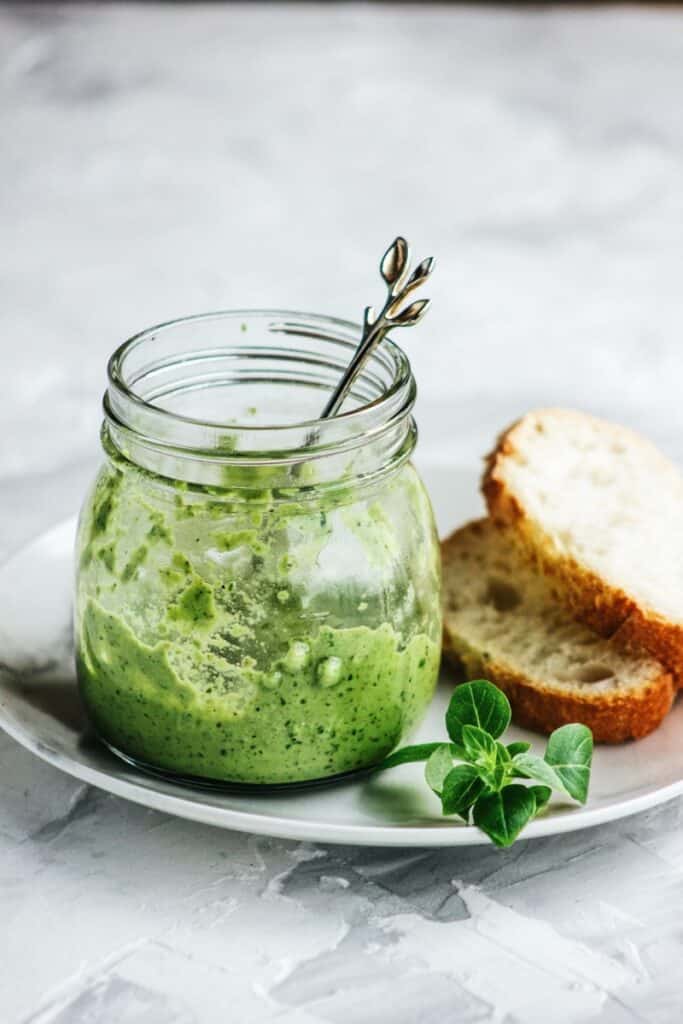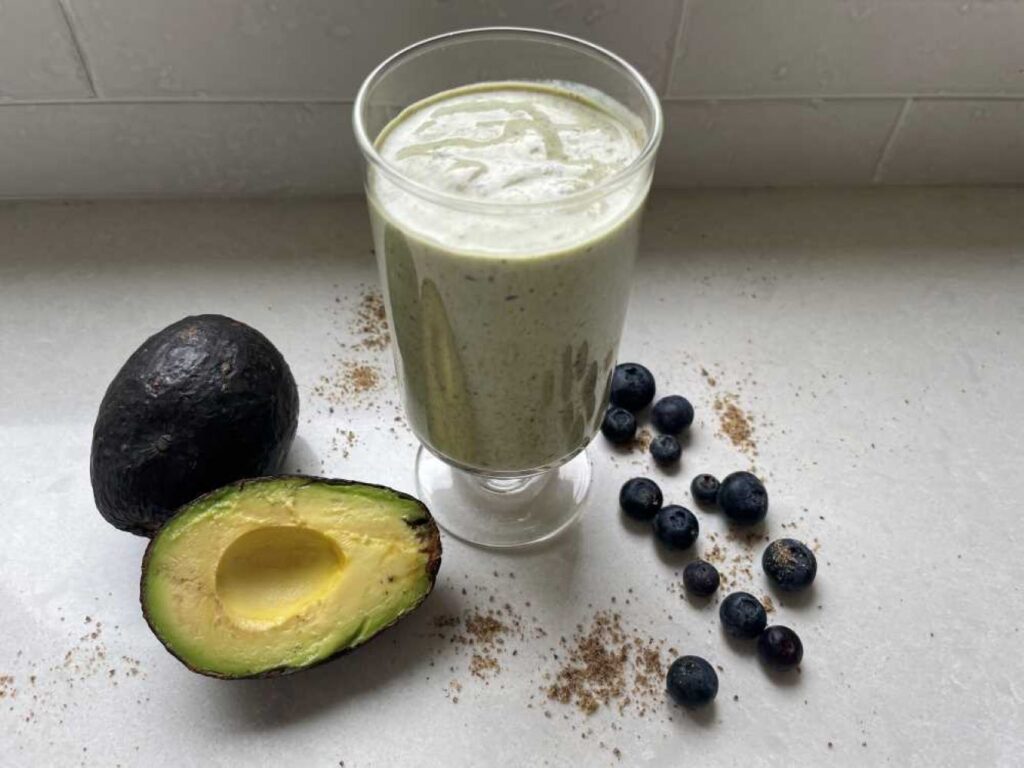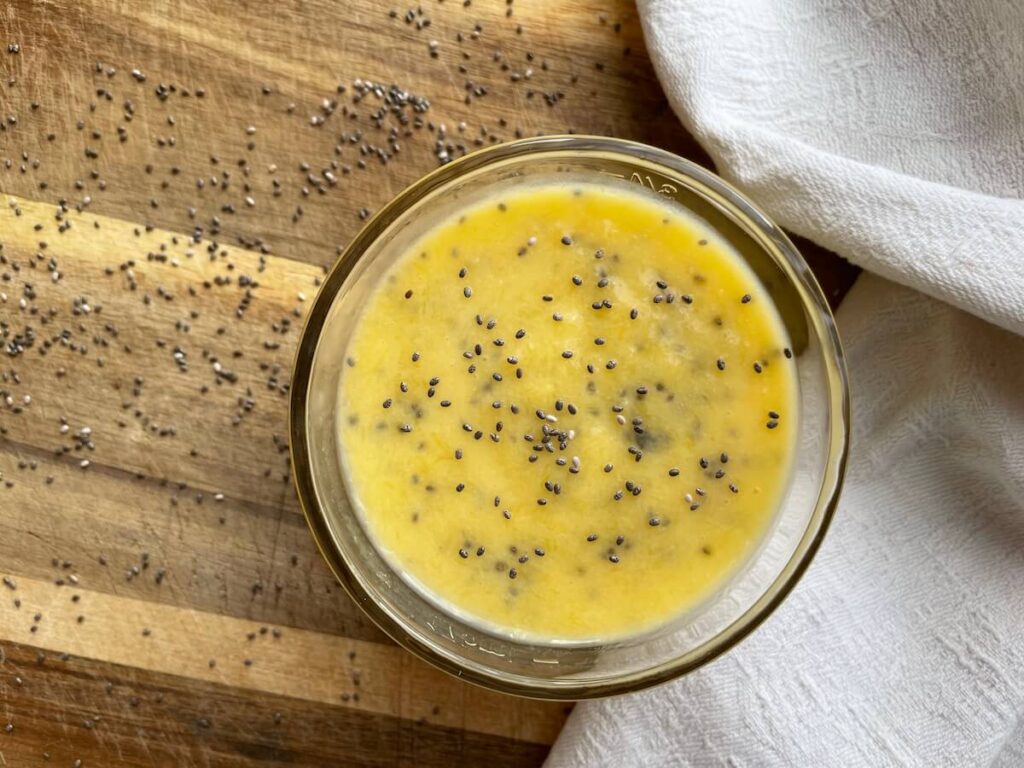“What bread is good for high cholesterol?” is a question on the minds of many health-conscious individuals today. Bread is a staple in many diets worldwide. If you are trying to lower your cholesterol, you may be wondering, can I still eat bread?
Well, the answer is yes!
However, the type of bread and how you choose to eat it matters in a healthy diet. This article will outline how to choose the best options for heart health and lower cholesterol levels.
Top Takeaways
- Bread can be part of a diet to lower cholesterol, but the type of bread matters.
- Whole grain, seeded, rye, sourdough, and oat bread are good options for heart health and cholesterol control.
- Avoid white bread and those with excessive added sugar, saturated fat, and high glycemic index.
- The overall dietary pattern and what you pair with bread are crucial for managing cholesterol levels.
- Top Takeaways
- Understanding Cholesterol
- Understanding Carbohydrates And Heart Health
- Understanding Bread
- Nutrition In Bread
- Dietary Patterns
- 5 Best Breads To Lower Cholesterol
- The Worst Bread For Heart Health
- What You Pair With Bread Is Important
- Other Diet Strategies To Lower Cholesterol
- Recipes To Lower Cholesterol
- Frequently Asked Questions
- Final Thoughts
Understanding Cholesterol
Cholesterol is a waxy, fat-like substance found in the blood that is essential for many processes in our bodies, including producing hormones, making new cells, and making vitamin D. The liver produces cholesterol for our bodies to use.
So, if we need cholesterol, why does it have such a bad reputation?
Well, the liver actually produces enough cholesterol for our bodies to use without the need for any extra from our diet. Therefore, consuming foods that contribute to cholesterol levels can potentially raise them too high, which can increase the risk for heart disease.
Now, it is also important to understand the difference between “bad “and “good” cholesterol.
In the body, cholesterol is transported through the blood by particles called lipoproteins. The cholesterol transported in low-density lipoproteins (LDL cholesterol) is being carried out of the liver to the body to be used. The cholesterol transported in high-density lipoproteins (HDL cholesterol) is being carried back to the liver from the body to be disposed.
The “bad” cholesterol is the low-density lipoprotein cholesterol. If there is too much, it can build up in the arteries and cause atherosclerosis, which is the narrowing of the arteries. This can increase the risk for heart disease and stroke.
The “good” cholesterol is the high-density lipoprotein cholesterol. HDL cholesterol helps to bring some of the LDL cholesterol back to the liver to be broken down, reducing the amount circulating in the blood. This can actually help to reduce the risk of heart disease and stroke.

Triglycerides
In addition to high LDL cholesterol, high triglyceride levels can also contribute to atherosclerosis, or plaque build-up, and increase the risk of heart disease, heart attack and stroke.
Triglycerides are the type of fat that stores excess energy in the body. Consuming more calories than the body needs, as well as eating foods high in saturated fat, trans fat and added sugar can lead to increased triglyceride levels.
Understanding Carbohydrates And Heart Health
The most important dietary strategy to lower cholesterol is to lower the amount of saturated fat (like the fat in red meat) and trans-fat consumed since these types of fats can contribute to increased LDL cholesterol. Check out this list of low cholesterol foods, foods that unclog arteries, and 7 day low cholesterol diet plan for specifics.
Along with eating a diet low in saturated fat, it is important to limit carbohydrates containing refined sugars and replace them with fruits or more complex carbohydrates.
Complex carbohydrates are made up of longer chains of sugar, which take the body longer to break down. Examples include whole grains, legumes, and vegetables.
It has been suggested that replacing refined sugars with complex carbohydrates can help to lower LDL cholesterol levels (1).
Read more about how long it takes to lower cholesterol.
Understanding Bread
There are many kinds of bread, and their nutrition values vary.
When deciding which bread to eat, it is important to look for those that are:
- high in fiber
- low in sodium
- low in cholesterol
- low in saturated fat
- low in added sugar
The Difference Between Whole Grain And White Bread
The difference between whole grain and white bread is due to what parts of the grain are used.
Grains are made up of three components: the bran, germ, and endosperm.
Whole grain bread is made using the entire grain kernel, all three parts of the grain, while white bread is made using only the endosperm.
Whole grain bread is the better choice because the bran and germ offer fiber and other nutrients including B vitamins, iron, and magnesium that are lost in white bread when these components are removed.
Some white breads will be fortified or add some of the lost nutrients back in, however not to the extent to which they exist in whole grain bread.
Diets rich in whole grains have been linked to a reduced risk of heart disease. To choose whole grain bread, look for the words “whole grain” or “whole wheat” as the first ingredient on the ingredients list.
Nutrition In Bread
Fiber
Whole-grain bread is an excellent source of fiber. Most of the fiber in bread is insoluble fiber, which helps contribute to the bulk of stool, controls blood sugar and aids in digestion.
As you will read later on, other types of bread like rye and oat bread contain a form of dietary fiber called soluble fiber. Soluble fiber helps to lower LDL cholesterol by binding it in the digestive tract, reducing the amount that can enter the blood.
Vitamins And Minerals
Whole grain bread contains B vitamins (like B1 thiamine, B2 riboflavin, B3 niacin, and folic acid), magnesium, iron, zinc, manganese, and phosphorus.
Sodium
Bread can be a significant source of sodium in many diets, especially in commercially produced breads. The sodium primarily comes from the salt (sodium chloride) that’s added to bread for flavor, as well as for its role in gluten development and fermentation control during bread making.
For example, a slice of typical store-bought white or whole wheat bread might contain between 100 to 250 mg of sodium. Some specialty breads or those with added ingredients (like olives or cheese) may have even more.
The recommended daily intake from the American Heart Association is no more than 2,300 mg per day for most adults and an ideal limit of no more than 1,500 mg per day for certain groups. When you consider that just a couple of slices of bread could contribute up to 500 mg of sodium (or more), it’s easy to see how bread can be a significant source of daily sodium intake, especially for those who consume multiple servings of bread or other high-sodium products throughout the day.
Label Reading: It’s essential to read nutrition labels if you’re trying to monitor or reduce your sodium intake. Check not only the sodium content but also the serving size.
Additionally, foods that are often paired with bread like deli meat, cheeses, spreads, condiments, canned soups and sauces can all be high in sodium. In addition to choosing a heart healthy bread, it is important to pair it with other heart healthy foods like low sodium sauces, low sodium hummus, and alternatives to deli meat.
Cholesterol
Bread does not typically contain cholesterol since it comes from a plant, but it is important to note that consuming cholesterol itself does not contribute significantly to raised blood cholesterol levels. The nutrient saturated fats are actually the main culprit.
Saturated Fat
Bread may contain saturated fat if it contains animal-based products in its ingredients. Be mindful of the ingredient list and nutrition label when purchasing bread.
Added Sugar
Some breads, especially white breads, can contain excessive added sugar which can add unnecessary calories and potentially affect blood sugar levels and triglyceride levels.
Again, when reading the nutrition label, pay attention to how much sugar is in the bread and where it lies on the ingredient list.
Glycemic Index
The glycemic index (GI) is a way that carbohydrates are measured based on how quickly and how much they raise blood sugar levels after being eaten. It is best to eat foods with a low glycemic index as they cause a more gradual increase in blood sugar. Low GI foods help to maintain blood sugar levels and keep you feeling full for longer.
White bread has a high GI, and therefore causes spikes in blood sugar. Whole grain bread on the other hand has a lower GI and should be chosen more often.
Other high GI foods are pop or soda, and therefore white bread would have similar effect on your blood sugar and blood triglyceride levels.
Dietary Patterns
When looking at cholesterol, it is important to note that a single food is rarely the only contributor to high cholesterol. Rather, it is the overall dietary pattern that helps to maintain healthy cholesterol levels.
Portfolio Diet And Bread
The portfolio diet is a dietary pattern that can help to lower LDL cholesterol and the risk for heart disease.
Whole grains included in this diet are oats, oat bran, barley, and brown rice to name a few.
Mediterranean Diet And Bread
The Mediterranean diet is another heart healthy dietary pattern that can help to lower LDL cholesterol.
Some whole grains included in it are whole grain bread, quinoa, farro, brown rice, and whole grain pasta.
5 Best Breads To Lower Cholesterol
I know you have been waiting for the answer to what bread is good for high cholesterol? I’ve listed the best bread for high cholesterol here. In fact, I’ve not only listed the best bread for cholesterol, but the top 5 best breads for cholesterol.
Whole Grain Bread
As mentioned earlier, whole grain bread is a low cholesterol bread that is high in fiber and other nutrients like B vitamins, zinc, magnesium and iron. It also has a low glycemic index, making it a great option.
Including more whole grains in your diet can help to reduce the risk of heart disease, diabetes and helps to lower LDL cholesterol (2). Thus, whole grain bread is the best bread for lowering cholesterol, and it is the best bread for high triglycerides.
Seeded Bread
Seeded bread is similar to whole wheat bread as it is a low cholesterol bread, except the addition of seeds adds some healthy fats, protein, and extra fiber to the bread. This bread includes flax bread which has flax seeds, chia seeds, and hemp seeds.
This is one of the best breads for lowering cholesterol because it will give the same benefits as whole grain bread, including decreasing the risk for heart disease and lowering cholesterol. Seeds are an essential component of the DASH diet, Mediterranean diet, and Portfolio diet.
Rye Bread
Rye bread is made from rye grains and thus is considered a low cholesterol bread. There are different types based on their colour (light and dark).
The light rye is comparable to white bread, as it is made from white rye flour which contains only the endosperm of the grain. Dark rye on the other hand, is comparable to whole wheat bread, and therefore is the better choice because it is made from whole rye grains including the bran and germ.
Rye bread is listed as one of the best breads to lower cholesterol because it is high in soluble fiber, has a low glycemic index and may help to reduce LDL cholesterol (3). As mentioned earlier, soluble fiber is shown to lower LDL cholesterol by binding it in the digestive tract (4).
Sourdough Bread
Sourdough bread is one of the best breads for high triglycerides because it has a low GI. It is uniquely made using wild yeast rather than baker’s yeast. The wild yeast can react with lactic acid that is found is flour and this is responsible for the bread rising.
The lactic acid actually increases the absorption of some of the nutrients found in sourdough bread, like potassium, zinc, and magnesium. This is because the lactic acid can deactivate phytate. Phytate is a substance found in bread that is referred to as an anti-nutrient because it decreases the absorption of some other nutrients.
Sourdough bread is good for heart health since it has a low glycemic index, preventing spikes in blood sugar and is high in fiber.
Oat Bread
Oat bread is also one of the best breads for cholesterol because it is made using oat flour which consists of ground oats and beta glucan. Oats are an amazing source of soluble fiber which helps to bind LDL cholesterol. Oats are also high in other nutrients like potassium and magnesium.

The Worst Bread For Heart Health
The worst bread for heart health is white bread like wonder bread. It has a high glycemic index, so it causes spikes in blood sugar when it is eaten, which increases insulin response and triglyceride formation.
Consistently eating high GI foods increases the risk for insulin resistance, diabetes, heart disease, and LDL cholesterol levels (5).
What You Pair With Bread Is Important
After choosing what bread to eat, it is also important to choose heart healthy foods to pair with the bread.
Butter and cheese are often paired with bread, although they can be high in saturated fat.
How To Eat Bread While Lowering Cholesterol
Instead of pairing bread with butter or cheese, try to pair it with other heart healthy foods like nut butters (like this peanut butter avocado toast), avocadoes (like this tofu toast) or beans (like this black bean toast recipe).
As mentioned earlier, try to choose whole grain bread rather than white bread.
In addition to bread, try replacing other carbohydrates with whole grain options. For example, use whole grain pasta in place of white pasta, or brown rice in place of white rice.
Also try to include bread within a balanced meal that also includes fruits, vegetables, and unsaturated fats.
Other Diet Strategies To Lower Cholesterol
- Increase soluble fiber. Oats are a great source of soluble fiber.
- Limit saturated fats and instead focus on unsaturated fats like olive oil or avocadoes.
- Check out these resources for more ideas on how to lower cholesterol: low cholesterol lunch ideas, smoothies to lower cholesterol, low cholesterol cookbooks, low cholesterol dessert recipes.
Recipes To Lower Cholesterol
Frequently Asked Questions
Can You Eat Bread If You Have High Cholesterol?
Yes, you can eat bread if you have high cholesterol. The important thing is to choose whole grain bread rather than white bread, and to be mindful of your serving size and what you are pairing with the bread.
What Bread Is Good For Controlling Cholesterol?
The best bread options for controlling cholesterol include whole grain bread, seeded bread, rye bread, sourdough bread, and oat bread.
Does Cutting Out Bread Lower Cholesterol?
While cutting out bread may help to lower cholesterol, it is important to keep in mind that eliminating bread alone is not the answer to managing cholesterol levels. You’re eating pattern as a whole is more important.
What Are The Worst Foods For Cholesterol?
The worst foods for cholesterol are those high in saturated fat, trans fat, and added sugar like these 11 foods that cause a stroke.
Is Sourdough Bread Good For Cholesterol?
Yes, sourdough bread is good for cholesterol. It has a low glycemic index and offers many nutrients to help manage cholesterol.
Does Bread Raise Cholesterol?
Bread by itself does not typically raise cholesterol; however, the types of fats and additives present in some breads can potentially contribute to increased cholesterol if consumed in large amounts.
Is There Cholesterol In Bread?
Most breads do not contain cholesterol as they are plant-based, but additives or ingredients like eggs or dairy can introduce small amounts of cholesterol.
Is Bread High In Cholesterol?
No, bread is not naturally high in cholesterol because it is plant based.
Is White Bread Bad For Cholesterol?
White bread doesn’t contain cholesterol, but its refined grains and lack of fiber can indirectly affect cholesterol levels when compared to whole grain breads as it can increase blood sugar and triglyceride levels.
Is Bread Bad For Cholesterol?
Bread itself isn’t bad for cholesterol, but the type of bread and its ingredients can have varying impacts on cholesterol and overall heart health.
Is Bread Bad For High Cholesterol?
Regular consumption of refined breads may not be the best choice for those with high cholesterol, while whole grain options can be part of a heart-healthy diet.
Does White Bread Have Cholesterol?
No, white bread does not naturally contain cholesterol.
Does Bread Contain Cholesterol?
Most breads, especially those plant-based, do not contain cholesterol, but certain ingredients like eggs can introduce some dietary cholesterol.
Does Bread Have Cholesterol?
Generally, bread does not have cholesterol unless it contains specific cholesterol-containing ingredients like eggs.
Final Thoughts
I hope you found this article helpful in answering your question “What Bread is Good for High Cholesterol” as you have learned, bread is only one food that can contribute to cholesterol levels. It is most beneficial to look at your eating habits when trying to lower cholesterol.
It is important to be mindful of the type of bread you choose, looking at the ingredients list and nutrition label to compare the nutritional value of different breads available.
Bread can be an amazing way to add fiber and other nutrients to your meals and can be used as a tool to incorporate many other heart healthy foods into your diet!
Tell me your thoughts below – What Bread is Good for High Cholesterol? Which bread do you eat? Has it helped lower your cholesterol levels?
This article was written by Siobhan Tyler, Nutrition Student, and Veronica Rouse, MAN, RD, CDE.








Excellent article!
Thank you Marion!